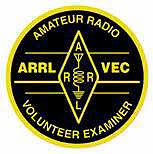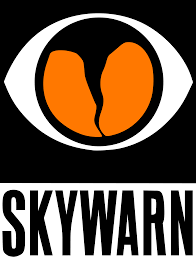Most distress frequencies fall within the HF spectrum. Many HF radios will operate, at least in receive mode, outside of the amateur band, allowing us to monitor those frequencies. In addition, there are actually recognized Amateur Radio Distress Frequencies.
For most of the history of radio communications 500 kHz has been the recognized international distress frequency for sea. While it is supposedly still monitored, it has ceased to be used as a primary sea distress calling frequency as of 2010. Other frequencies are being officially phased out, but that doesn't mean someone might not attempt to use it, especially if that's all they have.
Aircraft utilized 121.5 mHz and 243 mHz, usually monitored by commercial aircraft and airports. These were also monitored by satellite but was discontinued in 2010, partially due to the high number of false alarms. These systems are still used in General Aviation aircraft. Maritime vessels also use 156.8 for short-range distress communications, similarly phased out in 2010.
As you know, VHF has limited range and HF is not consistent in propagation, but something is always better than nothing. Satellites have changed how we view distress communications and an international agreement created the Cospas-Sarsat system. Orbiting satellites monitor the 406-406.1 mHz range for digital distress signals.
Compatible devices will broadcast a unique ID that can then be used to identify the owner, along with a wide range of information (contact info, family, or others who may be able to provide information useful in narrowing the search).
Despite the continuing move towards satellite targeting, many of these systems do not transmit GPS information. Additionally, there are few legal requirements to upgrade, and many existing aircraft and maritime vehicles will not upgrade to the newer technology.
As a result, monitoring of these frequencies by ground stations is still a useful, and potentially life-saving. I have many of the below frequencies programmed into my mobile and base radios and scan them on occasion. Most 121.5 mHz transmissions will turn out to be false alarms, but the sooner a misfired ELT is reset the sooner the frequency is clear for any real emergency.
Below are some frequencies worth programming in, either to monitor for distress calls, or during an emergency when traffic may be passed.
Common Frequencies
500 kHz is still monitored but as of 2010 has ceased to be used as the primary distress calling frequency at sea
2182 kHz for medium range maritime voice use. As of August 1st, 2013 the Coast Guard no longer monitors 2182 kHz.
Several HF frequencies exist for maritime voice long-distance distress calls: 4,125 kHz,6,215 kHz,8,291 kHz,12.290 MHz,16.420 MHz.
121.5 MHz is the long-standing civilian International Air Distress frequency. It is used by civilian distress radiobeacons (Emergency Locator Transmitters or ELTs); however, the Cospas-Sarsat system no longer monitors the frequency.
243 MHz for NATO military aircraft emergency frequencies
Marine VHF radio Channel 16 (156.8 MHz) for short range maritime use.
406 MHz to 406.1 MHz is used by the Cospas-Sarsat international satellite-based search and rescue (SAR) distress alert detection and information distribution system
Digital Selective Calling frequencies
Several maritime frequencies are used for Digital Selective Calling (DSC), and they are also monitored for DSC distress signals. While we can't decode these signals with typical Amateur Radio equipment, detecting the digital signal would still allow us to report there IS activity. The frequencies are: 2,187.5 kHz,4,207.5 kHz,6,312 kHz,8,414.5 kHz, 12,577 kHz, 16,804.5 kHz, 156.525 MHz Marine VHF radio Channel 70.
Amateur radio frequencies
Emergency Center of Activity (ECOA) frequencies informally established by the International Amateur Radio Union regional organizations:
|
Region 1 |
Region 2 |
Region 3 |
|
3760 |
3750 or 3985 |
3600 |
|
7110 |
7060, 7240 or 7290 |
7110 |
|
14300 |
14300 |
14300 |
|
18160 |
18160 |
18160 |
|
21360 |
21360 |
21360 |
Global ALE (Automatic Link Establishment)
Emergency/Disaster Relief Inter-operation Voice Channels of the amateur radio Global ALE High Frequency Network: 3791.0 kHz USB, 7185.5 kHz USB, 10145.5 kHz USB, 14346.0 kHz USB, 18117.5 kHz USB, 21432.5 kHz USB, 24932.0 kHz USB, 28312.5 kHz USB.
Other Emergency Frequencies
CB radio (citizens band) Emergency channels 9 (27.065 Mhz AM) and also 19 (27.185 Mhz AM)
FRS Channel 1 [462.5625mhz] (no CTCSS tone). This is promoted by CERT.
GMRS Channel 20 [462.675-141.3] is an unofficial emergency/traveler assistance frequency.




